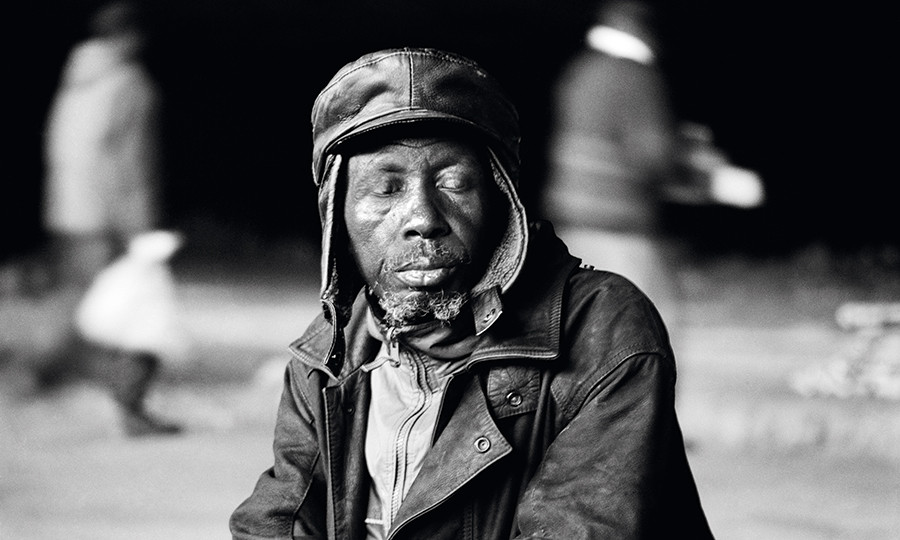[ad_1]
Santu Mofokeng, a giant of South African photography whose focus was the black citizens of his country during the post-apartheid era, has died at 64, according to the Agence France-Presse. A cause of death was not listed by AFP, though a report by the South African publication City Press last year said that he was suffering from progressive supranuclear palsy, a rare brain disorder.
Mofokeng’s black-and-white photography elegantly documented streetscapes often paying particular attention to the psychologies of the people he witnessed. Primarily working in Johannesburg’s Soweto township, Mofokeng crafted poetic images that allude, often obliquely, to longstanding histories of racism that pervade South Africa. “I have always held Soweto to be the litmus that I use in order to survey or navigate my way through in the world,” he once wrote.
Like many South African photographers, Mofokeng started out working under the sign of his teacher, David Goldblatt, who is considered the country’s most important documentarian of apartheid. Goldblatt’s works are often pointed and outwardly political, while Mofokeng’s pictures tended toward a sensibility marked by somberness and feelings of alienation. Whereas Goldblatt’s compositions are careful and precise, in a way that recalls Henri Cartier-Bresson’s work, Mofokeng’s are often intentionally askew, even occasionally awkward. As the photography critic Teju Cole once wrote, “Mofokeng seems to test how many eccentricities a picture can tolerate before it breaks apart.”
In the process, Mofokeng portrayed the feelings of black South Africans, and in doing so examined their country’s collective subconscious. His long-running “Billboards” series, completed between 1991 and 2009, focused on advertisements and the people who live around them. In one emblematic image, Mofokeng pictures four people walking a deserted street in Pretoria. Looming over them is a beer advertisement featuring a black man looking at the camera; the tagline below it reads, “YOU CAN’T DEFINE ME. I’VE ALREADY DONE THAT.” While Mofokeng’s most famous works include people, he sometimes produced semi-abstract photographs that were devoid of figures. One haunting series called “Radical Landscapes,” from 2011, features placid images of the South African countryside; the pictures allude to environmental destruction in South Africa.
In another iconic work, titled Eyes-Wide-Shut, Motouleng Cave, Clarens (2004), Mofokeng shows his brother Ishmael, fully facing the camera’s lens, with his eyes seemingly closed. In an essay recently published by Aperture, South African journalist and critic Sean O’Toole recounted a 2004 conversation with Mofokeng about the image, “I don’t know if Ishmael’s eyes are open or shut.” He was attempting to photograph magic: “Can you capture it?” Mofokeng asked O’Toole. “No.”
Santu Mofokeng was born in 1956 in Soweto, Johannesburg. He was a member of the famed Afrapix collective during the 1980s. Though known not well-known outside his home country for much of his career, Mofokeng has recently been the subject of major shows in Europe. In 2011, the Jeu de Paume in Paris mounted a mid-career survey that went on to travel to the Kunsthalle Bern in Switzerland, the Bergen Kunsthall in Norway, the Extra City Kunsthal in Antwerp, and the Wits Art Museum in Johannesburg.
In 2002, Mofokeng appeared in the 11th edition of the important quinquennial exhibition Documenta in Kassel, Germany, which was organized by art historian Okwui Enwezor and celebrated for the way it placed artists from Africa, Asia, and Latin America on equal footing with Western artists. In 2013, the artist was one of four who represented Germany at the Venice Biennale.
Until recently, Mofokeng was not well-known in America, though that began to change recently, when Steidl, the acclaimed publishing house, put out a book of his work in 2019. Writing on the occasion of the book’s release, O’Toole mused in Aperture, “Mofokeng’s immersive but also pensive photographs, which describe and acknowledge as much as they report and indict, fill in what words cannot quite register about South Africa—its ongoing dilemma of dispossession and penury, the quest for home and spirit.”
[ad_2]
Source link

